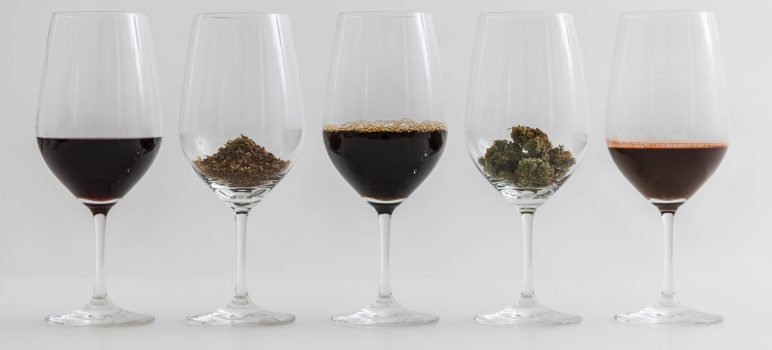The wine and cannabis industries have always had a fraught relationship in California, particularly in the Napa Valley, where both grapes and cannabis are grown.
Before voters approved Proposition 64 in 2016, legalizing weed for adult use, it was simple: the wine industry had little use for its neighbors who were then involved in illicit activities. Since legalization, though, the relationship has grown more complex.
The industries can now best be described as frenemies. This is true from agricultural areas where the industries sometimes compete for resources, to backyard parties, where some people use them together, while others have traded in their pinot noir for pineapple express. With the market and consumer preferences still unclear, vintners don’t know what to make of the pot people: friends or foes?
Even so, the Wine Industry Network, based in Healdsburg, decided three years ago to create the Wine & Weed Symposium, an annual event bringing together people from both industries in an effort to iron out differences and find areas of cooperation and mutual benefit. As this year’s virtual symposium revealed last week, there’s still plenty of work to do, all across the state.
The cannabis industry is still relatively tiny in the Napa Valley. That’s partly by design—county and city governments have been slow to approve licenses, even in areas where they are allowed. In Napa County, cannabis cultivation is prohibited, and retail shops are sparse. Some of this is due to pressure from some old-school vintners who don’t want weed sullying their brand. Santa Barbara has seen an explosion of cannabis producers since weed was legalized, and is now dealing with backlash from some in the city’s wine industry and from everyday residents.
Meanwhile, many other vintners are climbing on the weed train, and more than a few wine growers in the state are cultivating both wine and cannabis where that’s allowed.
Stephanie Honig is perhaps the perfect representative of the new cooperation. A wine-industry veteran and director of communications for the Honig Vineyard and Winery, she also is president of the Napa Valley Cannabis Association (NVCA), a group she helped to found.
She talked about the problems in Santa Barbara during a panel in the symposium, highlighting the more careful approach the NVCA wants to take in Napa County. An ordinance sponsored by the group would allow a pot industry to thrive, but would include many restrictions designed to keep it from interfering with the wine business, and even from allowing it to grow too big.
“Napa is all about wine and always will be,” she said, but added that the Napa Valley could benefit from diversifying because “things go really wrong if you put all your eggs in one basket.”
And while Santa Barbara’s cannabis industry is thriving, she cautioned it should be seen less as a model than as an object lesson. “We’re Napa,” she said. “We don’t look at Santa Barbara or how they make wine, so I’m not sure why we should look at them for how to grow cannabis.”
Fellow panelist Corey Beck, CEO and chief winemaker for The Family Coppola, agreed.
In Santa Barbara, “they rushed through it,” and in just a few years, that city’s population of pot growers has grown to 800, he said. By way of comparison, Humboldt County—historically the state’s pot-growing capital—has about 1,100 cultivators. In Santa Barbara, “the community feels like it just kind of got shoved on them,” Beck said.
Napa vintners are particularly worried about cannabis wrecking their brand. The answer to this, Honig said, is to create an industry that offers “premium, luxury outdoor-grown” weed. She said the wine industry must adapt, especially if it wants to appeal to younger consumers. Otherwise, “Napa Valley will just be the place their grandparents used to go.”
Beck concurred, noting that the Napa Valley evolved into wine to meet demand in the first place, and it can’t stop there. “We evolved from walnuts and prunes because if we were to have relied on them, the Napa Valley would not be where it is today,” he said.

